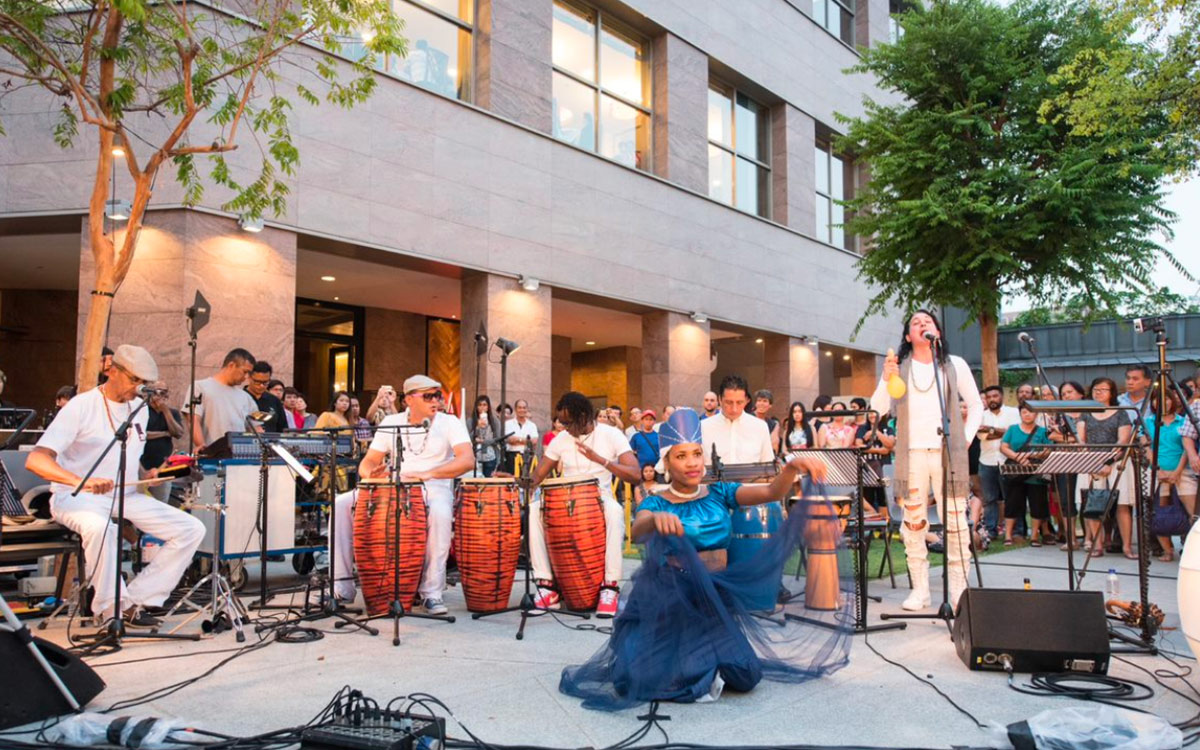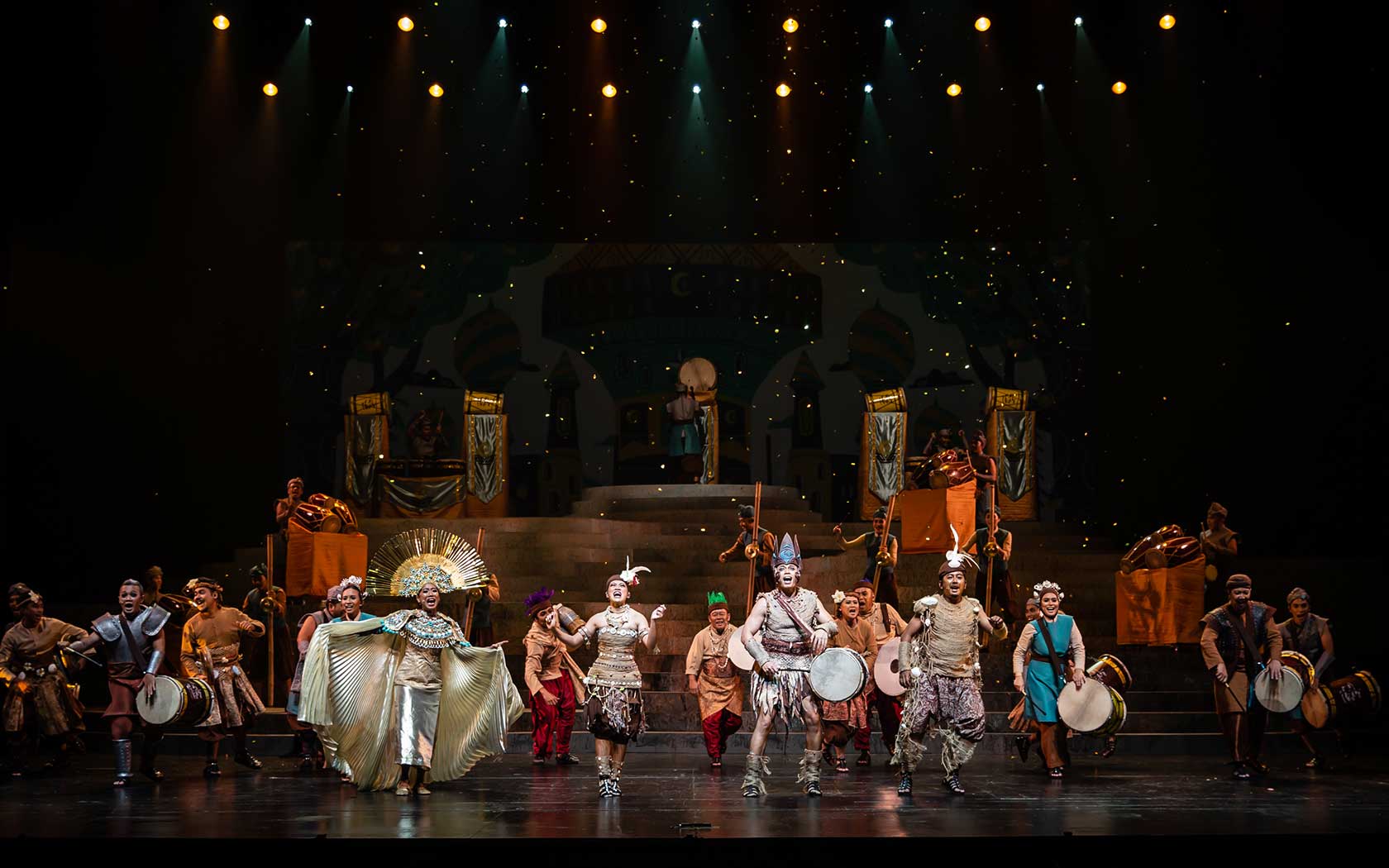We use cookies to improve your experience on our site. To find out more, read our data protection and cookie policy. By using our site, you agree to our use of cookies. Close to continue browsing.
Esplanade Presents
Santeria: Rhythms of the Gods
30 Apr 2023, Sun, 9.30pm
1 May 2023, Mon, 5.30pm
(Intermission: None)
DBS Foundation Outdoor Theatre at Esplanade
This event is over.

This event is over.
With roots in slave history and oppression, Santería is a syncretic religion of the African Diaspora in Cuba. Based on the beliefs and traditions of the Yorubas, one of the first West African ethnic groups to be introduced to Christianity on a large scale, Santería is a fusion of the worship of semi-divine spirits or deities called orishas, with elements of Spanish Catholicism.
With a myriad of melodic gestures, rhythms, dance movements and praise songs to invoke the orisha or deity in this performance, the Yemaya Folklore Group explores the musical rituals of Santería, in which musicians were responsible for bridging the gap between heaven and earth.
Clandestine practices of Santería
Santería (the Spanish word for “the worship of saints”) in its earliest days was once an exclusive slave practice that was shrouded in secrecy. It was an attempt at preserving their original religious practices, which were forbidden under yoke of subjugation. The devotees of the orishas had to disguise the worship of Yoruba deities, pairing the attributes of each orisha with analogous saints in Catholicism. This is how images of Catholic saints came to be displayed on the altars of Santería devotees.
According to the faith, everyone is appointed his or her own orisha, that acted as a spirit guide which they could commune with through ceremonies known as the toques de santo. Music, chanting and dancing became central to worship, with percussion playing an especially vital role. Consecrated batá drums play interlocking rhythms, with each type of rhythm invoking different deities. Worshippers sing call-and-response songs in archaic Yoruba, led by the lead singer known as an apón, in an attempt to reach out to the spiritual world via spirit possession. The entire ceremony often lasts between four to six hours; and while may appear otherworldly, its function addresses the very real uncertainties and hopes of the community.
From secret to secular
Today, Santería is gaining ground as an accepted and popular religious practice in Cuba and other parts of the world due to the mass migration of Afro-Cubans to the USA during the 19th century.
Many well-known Latin musicians are Santería followers. Carlos Santana, for example, incorporated orisha-themes and rhythms into his songs, including Hannibal, which includes a Yoruba chant to the deity Shango. Another popular singer is Adalberto Alvarez, whose song Y Que Tú Quieres Que Te Den opens with an a capella rendition of a Santería prayer and makes references to orishas.
No tickets will be issued. Seats are available on a first-come, first-served basis.
Yemaya Folklore Group
Yemaya Folklore Group is a band that specialises in folk music from Cuba, while striving to introduce Afrocuban music to the world. The band started in 2014 in Singapore and comprises Lid Ferrera (vocals, percussion), Rony Martinez (vocals, percussion), Diosdado Hechavarria (percussion) and Pablo Calzado (vocals, percussion). The group features a huge variety of rhythms and styles from Afrocuban folklore that are all related to Santería, which is the main religion in Cuba and most parts of South America.
30 Apr 2023, Sun
9.30pm
1 May 2023, Mon
5.30pm


Become a member

Great arts experiences begin with Esplanade&Me. Join this membership to enjoy ticket specials on shows at Esplanade, early bird specials, promotions at Esplanade Mall, unlimited access to Offstage and more.

Never miss a show again. Get on our mailing list.
- Santeria: Rhythms of the Gods







